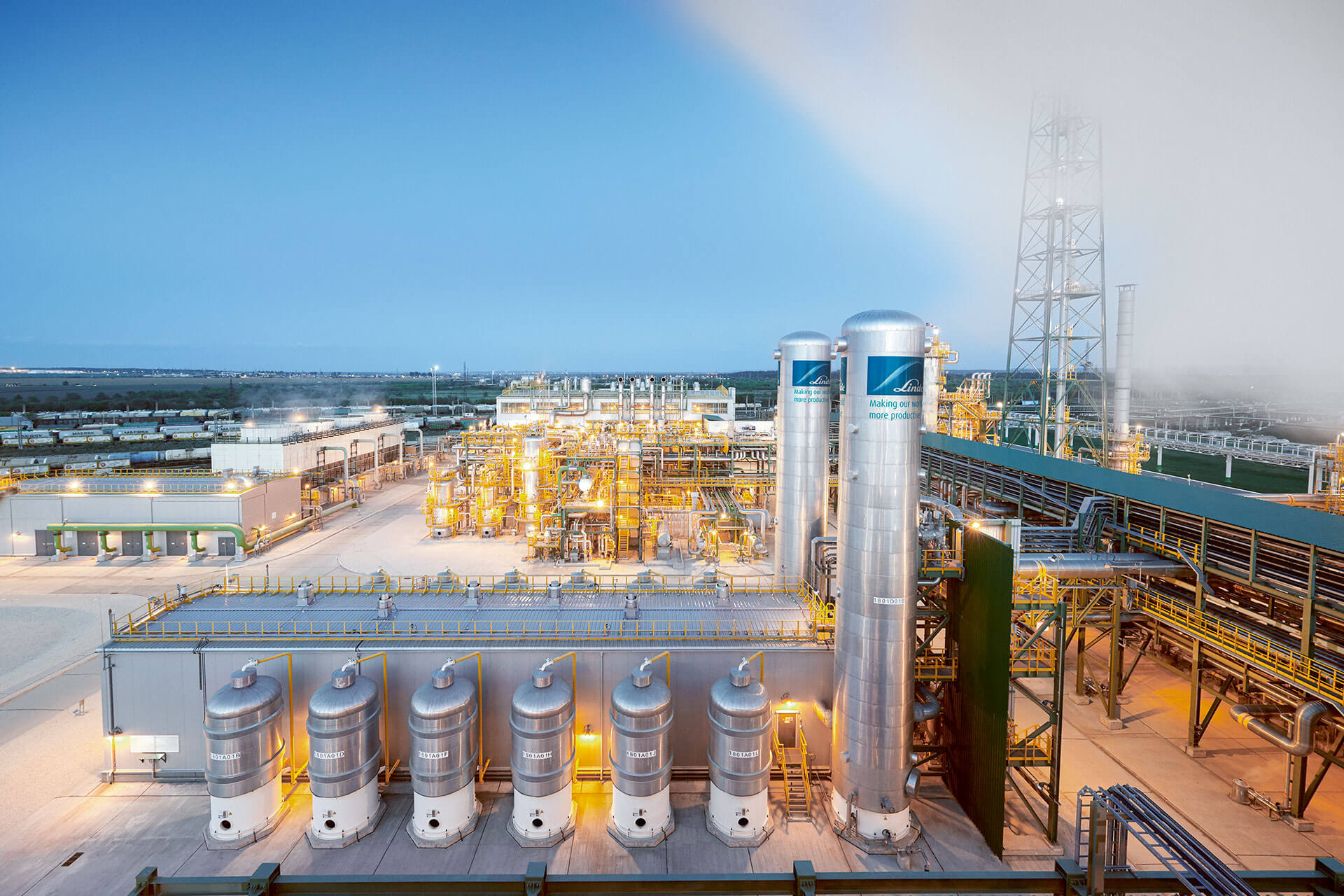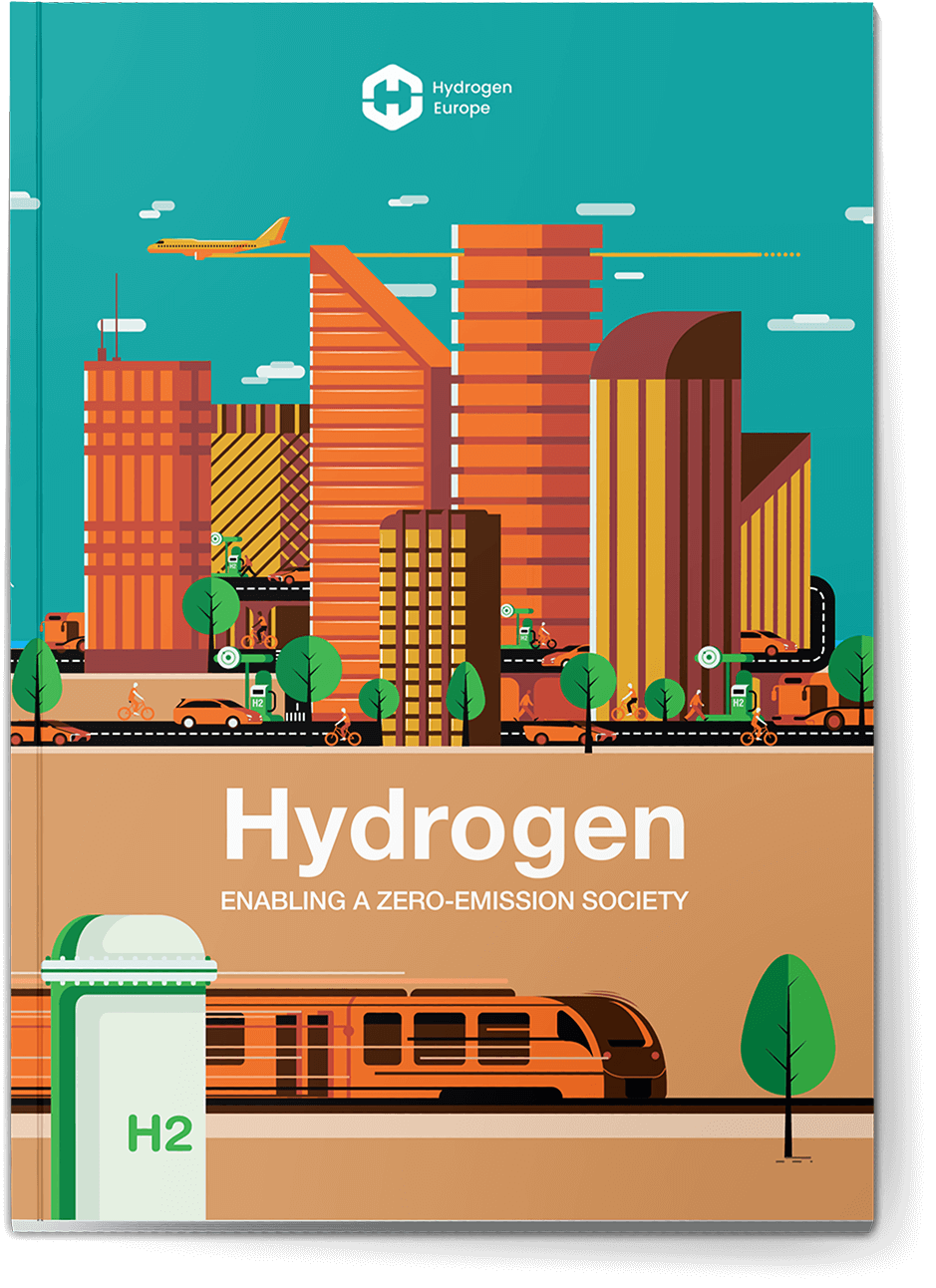Hydrogen Hope in the Hard-To-Abate Industries
How hydrogen expertise can support customers in heavy industry sectors along their decarbonization journey.
Deep decarbonization in sectors such as steel, maritime, aviation, and ammonia is easier said than done. Such sectors are known as “hard-to-abate” due to either a lack of technology to date or prohibitive costs – or both. But while these challenges cannot be solved overnight, there are strategies that can be applied today to get the decarbonization journey started.
A pioneering past and future in hydrogen
“Linde has been in the hydrogen business for many decades,” explains David Burns, VP Linde Clean Energy, “Our expertise throughout the value chain is unrivalled and we can draw on it to help accelerate the energy transition. We’re hydrogen-ready now!”
Given that hydrogen has the potential to avoid 80 gigatons (GT) of cumulative CO2 emissions from now through 2050, fuel switching – swapping out high carbon containing fuels for low carbon or green hydrogen in industrial processes – is clearly the end goal. But it’s not necessarily the starting point. Unfortunately, it’s not as simple as “green means go”.
Steelmaking: Where hope hangs on hydrogen
Coupling hydrogen know-how with industry-specific knowledge based on years of “traditional” business with industrial players is paramount for success – as David Burns explains: “For Linde, steel is already a very important business. We’re very familiar with it and we’re well connected with the major players. So as customers look to decarbonize, we’re in a good position to step in and support.”
When steel is produced using the conventional blast furnace-based route, it emits about two tons of CO2 for every ton of steel, making it one of the worst offenders when it comes to emissions: 8% of global annual emissions to be precise. For an industry in which fossil fuels are baked into the production processes, all hope for decarbonization hangs on hydrogen.
“The viability of green hydrogen is largely dependent on having a continuous and viable supply of green power. That’s what will determine the pace of uptake,” explains Joachim von Scheele, Director Metals & Glass at Linde. But in many areas, there are near-term decarbonizing steps that can be taken today to prepare for a switch to hydrogen in the future. “Maximizing the energy efficiency of the existing processes is where we always start with our customers,” explains von Scheele. The more energy efficient a production process, the less fuel is required. That brings an immediate benefit of reduced CO2 emissions from the current fuel, but also the future benefit of reduced spend on hydrogen. When it makes sense, customers might switch to hydrogen one process at a time. “It’s about growing over time and adapting to customers’ needs,” says von Scheele.
In the world’s first full-scale trial conducted with steelmaker Ovako in March 2020, Linde used green hydrogen together with Flameless Oxyfuel to heat steel before rolling. Executed in a full production environment, it proved that hydrogen works as a viable replacement to propane as burner fuel, with no loss of performance. “The problem when it comes to scaling this is simply cost,” explains von Scheele. In the meantime, a range of proven technologies can already reduce emissions – again, through improved efficiency. “When applied to steel, Hot Oxygen Technology and Flameless Oxyfuel solutions like OXYGON® and REBOX® HLL could cut carbon emissions from some processes by up to 60%,” von Scheele explains.

Sustainable Aviation: How hydrogen is taking off
A promising pathway to decarbonizing aviation is to fuel today’s planes with synthetically produced, cleaner alternatives to kerosene – which is refined from fossil fuel feedstock such as crude oil. One production method of a more sustainable aviation fuel (SAF) employs a Power to Liquid (PTL) process, which relies on the supply of a sustainable carbon feedstock and the production of green hydrogen through electrolysis using renewable energy. The carbon and hydrogen are converted to synthesis gas, a mixture of carbon monoxide and hydrogen, which in turn is converted to longer chain hydrocarbons for the production of jet fuel or SAF via the Fischer-Tropsch Process.
“The majority of SAF fueling today’s planes comes from cooking oils and animal fats, or biomass, such as sugarcane and corn grain. However, such feedstocks are grown on arable land, which could potentially be used to grow food, so feedstock limitation becomes a challenge,” says Kate Macfarlane, Sr. Business Development Manager, Clean Energy at Linde. “With the EU and its member states establishing increasingly tightening quotas for SAF blending, PtL kerosene is acknowledged to be an important piece of the decarbonizing strategy going forward.”
Efforts to decarbonize the aviation industry are not limited to reducing emissions from flights. Planes take off and land from the complex supportive ecosystems we know as airports. The facilities themselves need heating and lighting, passenger buses and other airport vehicles need fueled, and energy is needed for all of this. These hubs of activity could become hydrogen hubs – offering a way to achieve climate-neutral operations across the entire value chain.

Ammonia: Kick-starting decarbonization with hydrogen
Ammonia production is a heavy contributor to harmful emissions. Every year, roughly 190 million tons of ammonia are produced globally – mostly for agricultural fertilizers. Using green hydrogen to produce ammonia is therefore a promising path toward a more sustainable future.
As with other sectors, scalability of green ammonia production will prove to be a challenge in the coming years. Blue hydrogen – generated when carbon capture technologies are applied to conventional hydrogen production methods – is an important steppingstone on the path to zero emissions. This already effective solution allows for the necessary frameworks and infrastructures to be developed while green hydrogen production reaches the necessary scale.
“Clean hydrogen is the key ingredient when it comes to green steel, sustainable aviation fuel, alternative drop-in fuels for shipping and of course, green ammonia – which itself can be used as a zero-carbon fuel or as an energy vector for clean power,” says Burns. “As a global leader, we can offer our expertise in production, distribution and storage when exploring these opportunities,” he adds.
Ammonia is set to play a fundamental role in the development of the hydrogen economy as the market benefits from well-established global trade routes and infrastructures, as well as fully commercial technology already in place, at scale. New use cases for ammonia, such as marine fuel, hydrogen carrier and power generation, show significant growth potential in the next 10-15 years.
So far, when it comes to hydrogen, the good news is that viable decarbonization solutions exist. It works. And while these sectors may be hard to abate, at least it’s easy to see where the solution lies.



